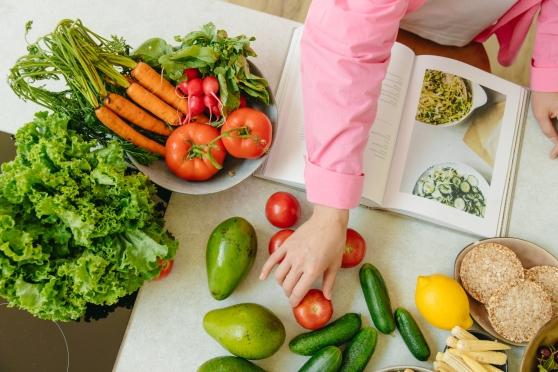Power your life with a healthy diet

Summer is a great time to get your diet on track for more energy and a healthier and longer life. How much do you know about the building blocks of a healthy diet? This may be the time to fine-tune—or overhaul—what and how you eat.
The Standard American Diet (SAD) is indeed sad: It’s responsible for many diseases that are ending Americans’ lives earlier than those of our counterparts in other industrialized countries.
The Standard American Diet consists of:
- 63% of calories from refined and processed foods;
- 25% of calories from animal-based foods; and
- 12% of calories from plant-based foods. When you remove white potatoes (French fries, mashed potatoes, etc.) from the plant-based category, healthy plant-based foods are only 6% of the average American’s diet.
Small changes in daily habits can make a big difference over time, so adopting healthier habits bit by bit can indeed transform your health.
While people’s dietary needs vary based on their individual health issues (consult your doctor for your particular needs), here are some overall guidelines you can follow.
A healthy diet
According to the U.S. Food and Drug Administration’s nutritional advice and the Harvard School of Public Health:
- Half of each meal should be vegetables and fruit (try for 2/3 of that total to be vegetables and 1/3 fruit). Aim for a rainbow of color and variety, and remember that potatoes don’t count as vegetables because of their negative impact on blood sugar.
- One-quarter of your plate should be whole grains. That can include whole wheat, quinoa, brown rice, oats, barley or foods made with them.
- Healthy protein — fish, lean poultry, beans and nuts — should make up the remaining one-quarter of your plate.
A good rule of thumb is to minimize your processed foods and focus on whole foods. As nutrition activist Michael Pollan famously said, “Don’t eat anything your great-grandmother wouldn’t recognize as food.” It’s time to break up with fast food!
Also important:
- Drink water, coffee or tea. Skip sugary drinks of all kinds, limit milk and dairy products to one to two servings a day and limit fruit juice to one small glass a day or eliminate it entirely. Eating whole fruit, with fiber intact, is much healthier than drinking juice.
- Choose healthy plant oils, such as olive, sunflower, avocado or canola oil, and use in moderation. Avoid partially hydrogenated oils, which contain unhealthy trans fats.
- Staying active is an important component of a healthy lifestyle. It will help keep your weight down, which is crucial for good health. Being overweight is implicated in numerous life-altering/ending diseases, from coronary heart disease to diabetes. A minimum of 20 minutes of exercise a day is recommended; you can add to that as you develop routines you enjoy. Even a brisk walk helps promote better health!
Some tips for more energy:
- Start your day with a healthy breakfast. Stabilize your blood sugar with protein and include healthy greens with fiber.
- Try making lunch the main meal of the day.
- Have a healthy snack at 4 p.m. so you’re not too hungry at dinnertime.
- Make sure your diet includes Omega-3 fatty acids from whole foods such as avocados, walnuts, fish, flax seeds, flax oil and green, leafy vegetables.
- Stay hydrated, with water or water infused with fruit for more flavor.
- Get moving! Enjoy the great outdoors and any kind of exercise that brings you pleasure.
Some healthy recipes:
There’s a wide world of healthy recipes available online. Below are a few to start with.